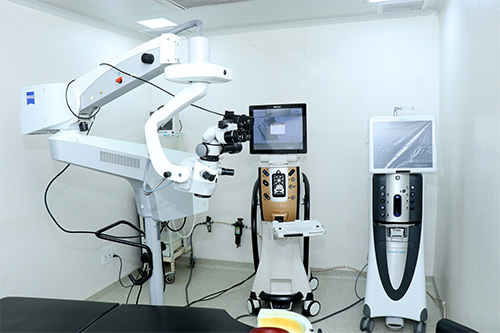What is Contoura Vision specs removal?
Contoura Vision is a cutting-edge procedure that operates on the optical axis, which is the natural seeing axis of the eye. Unlike traditional methods such as LASIK and SMILE, which treat the pupillary axis, Contoura Vision offers a more personalized and precise approach to vision correction. If you’re looking for the Best Contoura Hospital in Karnal for Specs Removal Surgery, you can trust advanced facilities that specialize in this innovative technology. Contoura Vision ensures better visual outcomes, reduced risk of side effects, and a higher level of accuracy, making it an ideal choice for those seeking freedom from glasses or contact lenses.
This treatment on Visual Axis improves the quality of vision.
Story of Contoura Vision – How it was developed?
Alterations in correcting vision have been around for centuries. Eyeglasses were formed as early as the 13th century in Europe. Contact lenses were built in the late 1800s from hand-blown glass in Switzerland. Changes in correcting refraction errors continued to be developed. In RK, incisions are made with a diamond knife from the core of the cornea to the periphery to alter the cornea’s curve. RK is still done today to treat several types of astigmatism.
Contoura Vision Eye Surgery Procedure
In the late 1980s, many ophthalmologists used excimer lasers to reshape the contours of a human eye. This way, called photorefractive keratectomy, was established in the early 1990s by the U.S. FDA. Since that time, PRK laser-assisted eye surgery has allowed more precise, longer-lasting changes to refractive mistakes.
LASIK, which stands for laser-assisted in-situ keratomileuses, has refined the ways of RK and PRK. During LASIK surgery, a small flap of the cornea is increased to allow reshaping of the underlying corneal tissues. The flap is replaced after the operation. LASIK surgery is the most common healing refraction surgical procedure in the world used to correct astigmatism, short-sightedness, and long-sightedness.
In 1999, doctors developed wavefront review, which maps the errors of a patient’s eye as a whole. The information is added to the laser, resulting in a customized plan with much more reliable results. Contoura Vision builds on the principle of topography, giving a precise mapping of 22,000 points of the cornea. Traditional LASIK wave-front only maps about 200 points of the entire eye.
Who is a Candidate for this Procedure?
A qualified ophthalmologist needs to conduct a thorough eye exam and health history to ensure a patient will benefit from the procedure. At Arora Eye Center in Karnal, Haryana, Sanjeev Arora and his team of eye specialists evaluate the unique eye health of each patient and recommend a treatment plan that will provide the best visual outcome. As the Best Contoura Hospital in Karnal for Specs Removal Surgery, Arora Eye Center is equipped with advanced technology and expertise to deliver exceptional results for vision correction. Whether you’re considering Contoura Vision or other specs removal surgeries, their personalized approach ensures the highest standard of care for your eye health.
Difference between Contoura Vision, LASIK & Smile
Both LASIK and Contoura Vision are state-of-the-art methods used to help short-sightedness, long-sightedness, and astigmatism. There are differences between the two types of operations in both procedures and visual outcomes.
Although LASIK has been the gold standard to reduce the need for spectacles or contact lenses, the Contoura Vision procedure gives better visual acuity and refractive outcome in the vast majority of cases. Contoura Vision takes LASIK corrective operation to a new top. Contoura Vision is a computer-guided topographic mapping system that maps microscopic contours of the cornea.
This system treats irregularities of the shape of the cornea as well as optics. Changes in the curvature of the cornea are often the underlying cause of vision difficulties. The treatment is focused on the visible axis of the eye. In contrast, other LASIK systems are focused on the pupil.
With Contoura Vision, the contours of the cornea made by the computer analysis are programmed into a specially designed laser used for this procedure.
The changes of the cornea are smoothed, and optical quality becomes so perfect so that light penetrates the eye evenly. This results in clear, sharp vision. The technique performs beyond the regular changes of eyeglasses. Most patients see more clearly without views after treatment with Contoura Vision than they did with improving lenses. There are also significantly fewer difficulties with glare and halos around lights.
The results of the Contoura Vision correction are exciting. Contoura Vision is also used in some instances to treat people who have had LASIK surgery and are not satisfied with the outcomes. If you are looking for the Best Contoura Hospital in Karnal for Specs Removal Surgery, it’s important to choose a facility with advanced technology and experienced specialists to ensure the best possible results. Contoura Vision offers a highly personalized approach to vision correction, making it a top choice for those seeking freedom from glasses or contact lenses.






